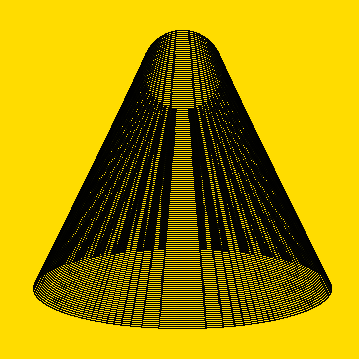Learning to create images with computer code
DOI:
https://doi.org/10.7577/formakademisk.4633Keywords:
Processing, programming, tinkering, learning, digital imagesAbstract
Programming is becoming a part of the school curricula in Norway both in lower and upper secondary education – this includes subjects such as art, design and craft. What can programming contribute to the learning processes of these subjects? ‘Tinkering’ is a creative phase in a learning/working process, emphasising both creation and learning. In this project, visual images are created via computer programming to enhance the main author’s learning. The process is structured into stages. The important phases of the learning process are realised as a result of tinkering with existing codes. An important discovery for the learner, and one key aspect of programming images is that, as a mode, it opens up ways to create repetitions effectively, resulting in various patterns. This turned out to be motivating for the learner. This paper discusses tinkering as a learning process that is relevant to programming within art, design and craft education.
References
Antonsen, R. (2018). Card Shuffling Visualizations. In Proceedings of Bridges 2018: Mathematics, Art, Music, Architecture, Education, Culture (pp. 451–454). http://archive.bridgesmathart.org/2018/bridges2018-451.html
Berland, M. (2016). Making, tinkering and computational literacy. In K. Peppler, E. R. Halverson, & Kafai, Y. B. (Eds.), Makeology: Makers as learners (Vol. 2, pp. 196–205). Routledge. https://doi.org/10.4324/9781315726496-12
Berland, M., Martin, T., Benton, T., Smith, C. P., & Davis, D. (2013). Using learning analytics to understand the learning pathways of novice programmers. Journal of the Learning Sciences, 22(4), 564 – 599. https://doi.org/10.1080/10508406.2013.836655
Bocconi, S., Chioccariello, A. and Earp, J. (2018). The Nordic approach to introducing Computational Thinking and programming in compulsory education. (Report prepared for the Nordic@BETT2018 Steering Group). https://doi.org/10.17471/54007
diSessa, A. A. (2001). Changing Minds : Computers, learning and literacy. MIT Press. https://doi.org/10.7551/mitpress/1786.001.0001
European Schoolnet. (2017). Country Report on ICT in Education – Norway. http://www.eun.org/it/resources/country-reports
Kuehni, R. G. (2004). Color: An introduction to practice and principles. https://doi.org/10.1002/0471687448
Ludvigsen, S. (2014). Elevenes læring i fremtidens skole – Et kunnskapsgrunnlag : Utredning fra et utvalg oppnevnt ved kongelig resolusjon 21. juni 2013. Kunnskapsdepartementet.[Pupils' learning in the future school – A knowledge base : Report from the committee appointed by Royal Resolution on 21 June 2013]. https://www.regjeringen.no/no/dokumenter/NOU-2014-7/id766593/
Lær kidsa koding [Teach the Kids How to Code]. (n.d.). Oppgaver [Tasks]. https://oppgaver.kidsakoder.no
NOU 2015: 8. (2015). The School of the Future — Renewal of subjects and competences. Ministry of Education and Research.https://www.regjeringen.no/en/dokumenter/nou-2015-8/id2417001/
Reas, C., & Fry, B. (2006). Processing: A programming handbook for visual designers and artists. MIT Press.
Reas, C., & Fry, B. (2009). Processing: Programming for designers and artists. Design Management Institute Review, 20(1), 52–58. https://doi.org/10.1111/j.1948-7169.2009.tb00225.x
Reas, C., & Fry, B. (n.d.). Processing. https://processing.org
Regjeringen [The Government]. (2017). Åpner for koding som valgfag ved alle skoler. [Coding as an elective in all schools]. https://www.regjeringen.no/no/aktuelt/fra-hosten-kan-alle-ungdomskoler-tilby-programmering-som-valgfag-til-elevene/id2552808/
Regjeringen [The Government]. (2018). Fornyer innholdet i skolen [Press release]. [Renewing the content in schools]. https://www.regjeringen.no/no/aktuelt/fornyer-innholdet-i-skolen/id2606028/?expand=factbox2606073
Scardamalia, M., & Bereiter, C. (2010). A brief history of knowledge building. Canadian Journal of Learning and Technology, 36(1). https://doi.org/10.21432/T2859M
Schön, D. (1991). The reflective practitioner: How professionals think in action. Avebury. (Original work published 1983)
Sennett, R. (2008). The craftsman. Yale University Press.
Utdanningsdirektoratet. (2018). Yrkesfaglige utdanningsprogram fra 2020 [Vocational education programs from 2020]. https://www.udir.no/laring-og-trivsel/lareplanverket/forsok-og-pagaende-arbeid/ny-tilbudsstruktur-og-nye-lareplaner-pa-yrkesfag/ny-tilbudsstruktur-i-fag--og-yrkesoplaringen/

Downloads
Published
How to Cite
Issue
Section
License
Copyright (c) 2021 Peter Haakonsen , Laila Belinda Fauske

This work is licensed under a Creative Commons Attribution-NoDerivatives 4.0 International License.
Authors who publish with this journal agree to the following terms:
- Authors retain copyright and grant the journal right of first publication with the work simultaneously licensed under a Creative Commons Attribution 4.0 License that allows others to share the work with an acknowledgement of the work's authorship and initial publication in this journal.
- Authors are able to enter into separate, additional contractual arrangements for the non-exclusive distribution of the journal's published version of the work (e.g., post it to an institutional repository or publish it in a book), with an acknowledgement of its initial publication in this journal.
- Authors are permitted and encouraged to post their work online (e.g., in institutional repositories or on their website) prior to and during the submission process, as it can lead to productive exchanges, as well as earlier and greater citation of published work (See The Effect of Open Access).
- The author(s) must manage their economic reproduction rights to any third party.
- The journal makes no financial or other compensation for submissions, unless a separate agreement regarding this matter has been made with the author(s).
- The journal is obliged to archive the manuscript (including metadata) in its originally published digital form for at least a suitable amount of time in which the manuscript can be accessed via a long-term archive for digital material, such as in the Norwegian universities’ institutional archives within the framework of the NORA partnership.
The material will be published OpenAccess with a Creative Commons 4.0 License which allows anyone to read, share and adapt the content, even commercially under the licence terms:
This work needs to be appropriately attributed/credited, a link must be provided to the CC-BY 4.0 licence, and changes made need to be indicated in a reasonable manner, but not in any way that suggests that the licensor endorses you or your use.



